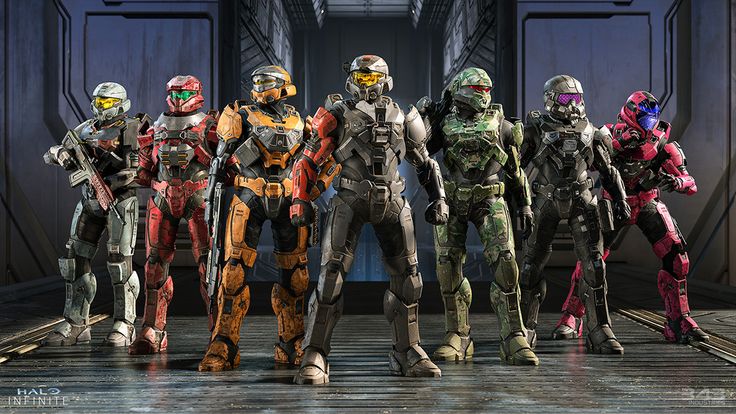Introduction
In 2003, the gaming global witnessed a pivotal moment with the discharge of Halo: Combat Evolved, a identify that might all the time alter the panorama of first-individual shooters and revolutionize the sci-fi genre. However, past its groundbreaking gameplay and immersive storyline, one of the maximum hanging capabilities that helped Halo depart a long-lasting affect became its distinct visual layout. The Halo (2003) recreation icons and banners have become emblematic of the franchise, gambling a vital role in its branding and reputation. These factors now not simplest captured the essence of the sport however additionally contributed to constructing the cultural importance of Halo.
In this article, we can dive into the records and layout factors of Halo’s 2003 game icons and banners, exploring how those visual additives contributed to the success of the franchise. Additionally, we’ll observe their role in building the legacy that maintains to steer contemporary gaming.
The Significance of Game Icons and Banners in Halo (2003)
Icons and banners are regularly an unnoticed element of video game advertising, but for Halo, they had been a important a part of developing a cohesive identification. The Halo (2003) game icons and banners no longer best represented the game however additionally served as a visible language that communicated the center topics of the Halo universe. Whether it became the Master Chief’s visor, the ring-like structures of the titular “Halo,” or the different font used throughout the branding, each element of the design changed into deliberate and powerful.
1. Iconic Visual Language
The sport icons and banners in Halo (2003) featured several recurring symbols that became synonymous with the franchise. One of the maximum memorable became the Master Chief’s helmet, which seemed in lots of the sport’s promotional substances, serving as a direct identifier for the game. This helmet icon, with its reflective visor and powerful, faceless design, encapsulated the heroism and thriller of the primary protagonist, making it instantly recognizable.
Additionally, the floating ring-global, known as “Halo,” served as any other visual staple. The circular shape set in opposition to a backdrop of stars was a symbol of the sport’s technology-fiction roots, drawing gamers right into a universe complete of alien intrigue and cosmic struggle.
2. The Color Palette and Aesthetic Choices
Another key detail that made Halo (2003) sport banners stand out become the carefully curated shade palette. The deep veggies, silvers, and blues meditated the technological and futuristic subject matters of the sport, even as evoking a feel of army strength and high-tech warfare. These colours have been deliberately selected to set the tone for a sport that blended both human and alien factors.
The universal aesthetic became minimalist yet impactful, allowing the icons to pop without being cluttered by pointless details. This sleek design helped the sport icons and banners preserve their appeal through the years, and their simplicity made them without problems adaptable for sequels and spin-offs.
The Role of Banners in Building Brand Recognition
1. Banners as Marketing Tools
From the moment Halo become released in 2003, its banners performed a full-size function in the game’s advertising and marketing strategy. Whether they have been displayed on web sites, gaming boards, or promotional substances at sport stores, those banners became the visible cornerstone of the sport’s identification. The image of Master Chief, regularly featured on those banners, became key in attracting interest from both seasoned game enthusiasts and novices.
Additionally, the tagline “Combat Evolved,” which observed many of these banners, flawlessly encapsulated the sport’s promise to revolutionize first-character shooter mechanics. The banners now not simplest advertised the game however have become symbols of the technological improvements and compelling storylines gamers may want to expect from Halo.
2. Community-Building Through Custom Banners
As Halo (2003) grew in popularity, the game’s fanbase became increasingly involved in developing custom banners and icons. Online gaming communities frequently created fan artwork and unofficial banners that highlighted their favorite factors of the sport, from precise multiplayer maps to extremely good in-sport moments. These custom banners served as each expressions of fandom and gear for community building, as gamers proudly displayed them on online boards and social media.
This network engagement with the sport’s banners best in addition cemented Halo’s region in the broader gaming way of life. The ability of these banners to go beyond the sport itself and emerge as a part of the player’s identity confirmed how powerful visible elements may be in growing lasting emblem loyalty.
Evolution of Halo Game Icons and Banners
Since the original launch in 2003, the Halo franchise has evolved, and so have its icons and banners. However, the various design ideas set up in Halo (2003) have remained consistent in the course of the years. Even as the generation at the back of the sport improved, the key visible symbols—Master Chief, the Halo ring, and the bold futuristic font—remained essential components of the franchise’s branding.
1. Consistency in Branding
Over the years, Halo has maintained a robust visible consistency throughout its titles, and plenty of that is owed to the groundwork laid inside the 2003 game icons and banners. While more recent releases, consisting of Halo Infinite, feature greater complex and specific photos, the essence of the original visual fashion can nevertheless be visible. This consistency has been instrumental in creating a unified Halo brand that game enthusiasts can apprehend immediately.
2. Modernization Without Losing Identity
Despite the improvements in picture design and virtual art, Halo has controlled to modernize its icons and banners without dropping its identification. The sport icons are actually rendered with extra detail, and the banners frequently incorporate dynamic factors like 3-D models or animations. However, the familiar visual cues—consisting of the enduring helmet and Halo ring—continue to be significant, linking every new sport returned to the unique Halo.
The Cultural Impact of Halo (2003) Game Icons and Banners
Beyond their advertising and marketing and branding significance, the Halo (2003) recreation icons and banners have had a cultural effect. The game’s visual factors have become a part of the wider landscape of pop culture, acting on everything from fan-made merchandise to authentic recreation add-ons. The instantly recognizable design factors have additionally been parodied and referenced in other kinds of media, solidifying their status as cultural icons.
1. Influence on Other Games
The achievement of Halo and its visual branding has prompted different recreation builders as well. The emphasis on a strong, iconic visible identification has become a hallmark of a success gaming franchises. Games together with Gears of War and Destiny have adopted comparable approaches, that specialize in creating powerful icons and banners that resonate with gamers and enhance the overall gaming experience.
2. Merchandising and Beyond
The cultural effect of Halo icons and banners extends beyond the digital realm. They have end up indispensable to the franchise’s merchandising strategy, performing on the entirety from apparel to movement figures. The helmet icon, specifically, has been used on endless portions of memorabilia, similarly cementing its status as a image of the Halo universe.
Also read: Exploring Ruodan Liu Dissertation
Conclusion
The Halo (2003) sport icons and banners had been not simply marketing tools; they have been key factors that helped build the sport’s identity and legacy. These visuals, rooted in a wonderful aesthetic and bold symbolism, played a critical role in making Halo one of the maximum cherished gaming franchises of all time. Even today, the visible language mounted in the authentic Halo keeps to persuade new video games and resonate with gamers around the arena.
As the Halo universe expands, the game’s icons and banners continue to be a testomony to the significance of visual branding in growing a long lasting cultural phenomenon. Halo’s banners, with their simple but effective designs, have end up undying artifacts in gaming records, reminding us of the game that for all time modified the enterprise.

